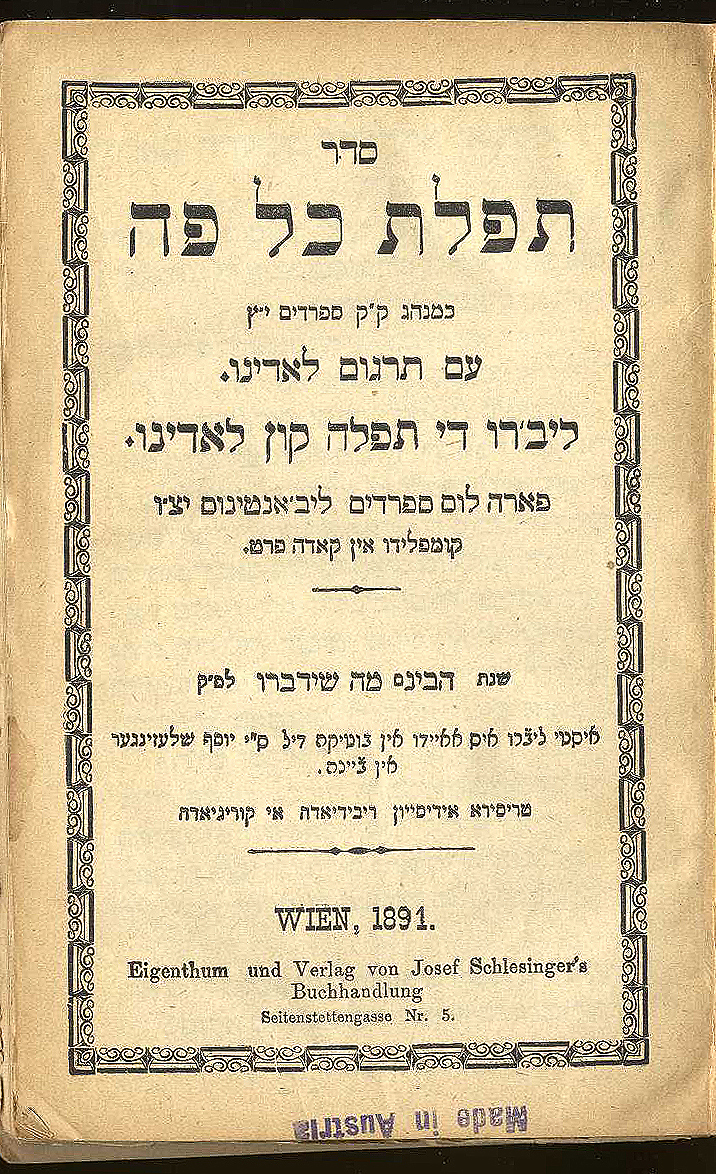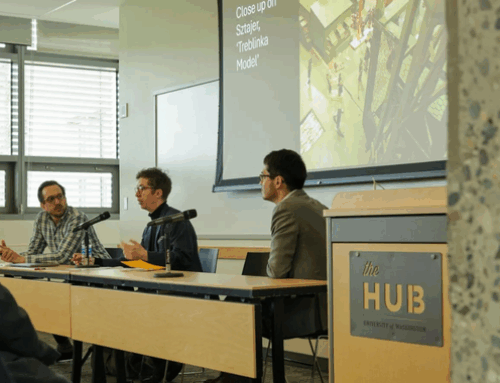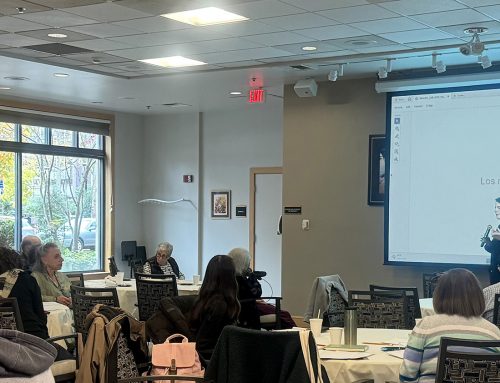
Makena Owens grew up in Washington and attends Stern College in New York.
Makena Owens is a rising senior at Stern College in New York, but she has just completed a prize-winning project with a distinctly Seattle Sephardic flavor. One year ago, Owens began developing an independent study project on bilingual Hebrew-Ladino prayerbooks with Prof. Devin Naar. Her resulting paper won this year’s Monis and Chaya Zuckerman Memorial Award for best research paper in Jewish history at Stern College.
Prof. Naar says, “This is the first time a student of mine has won an award at a different university! It was a pleasure to work with Makena on this project – both in person and from afar. So methodical in her close analysis of these two Ladino-Hebrew siddurim and thoughtful about questions of authorship and audience, Makena brings ‘Vienna’s call to prayer’ back to life. I hope that she will continue to pursue her studies of Ladino and Sephardic history and culture in the future.”
Here’s our new interview with Makena Owens. The Stroum Center wishes Ms. Owens and Prof. Naar a hearty mazal tov on this great achievement!
Where in Seattle did you grow up and what high school did you attend?
I grew up in Sammamish, Washington and attended Northwest Yeshiva High School, but I spend every Shabbat at Sephardic Bikur Holim in Seattle.
What are your year and major(s) at Stern? What are your extracurricular activities?
I am currently a junior at Stern College and next year will be my last year. I am majoring in English Literature and have a Business minor. I am the editor in chief for the Yeshiva University Journal of Fine Arts, the managing editor for the campus newspaper, the Yeshiva University Observer, and finally, I tutor at the Beren Writing Center.
Can you tell me a little more about your research project with Prof. Naar? How did you get involved with studying Hebrew-Ladino prayerbooks?

Cover of Seder Tefilat Kol Peh, published in Vienna in the 1890s. Image courtesy of the Sephardic Studies Digital Library & Museum.
We had actually been in conversation about this project for a few years. My grandmother, who is a Holocaust survivor from Salonica, Greece, met Dr. Naar about two years ago and introduced us. He mentioned that he was looking for student volunteers to help him with organizing and cataloging the numerous siddurim (prayerbooks) that he was receiving from Seattle community members. Although it didn’t work out for us to work together that summer, we reconnected again in April last year and I proposed the idea of doing a more involved research project for college credit. We spent the next few months brainstorming research approaches via email correspondence and meetings when I was in Seattle. I decided to compare and contrast two siddurim from Vienna, Austria, one from 1892 and one from 1923/24. At the start of the project, this was the only direction I had.
Beginning in May 2013, I met with Dr. Naar to propose several questions to give my research more direction. I received copies of the siddurim from Ty Alhadeff and then spent the rest of summer researching the Sephardic Jews of Vienna and translating various Ladino passages of the siddur. Most of the work involved simply looking at the siddurim and taking note of inconsistencies or variances and then recording those. Once I had a detailed record of the differences I could find, Dr. Naar and I met around three times throughout the summer to discuss the implications of my findings.

Title page of Seder Tefilat Kol Peh. Image courtesy of the Sephardic Studies Digital Library & Museum.
The project ended up being a contextualization of the two siddurim within their respective time periods, as well as some speculations about the different roles of men and women in the Sephardic communities in which those siddurim were published. Finally, I made some speculations as to the nature of the communities’ sociological ideologies toward Jewish education.
Do you plan to continue studying Ladino or Sephardic topics in the future?
At some point, I would love to return to this project and develop it further. The hardest part about the project was narrowing my focus and determining where to draw the line in order to produce a “final” product (I say final in quotes because things like this are never truly conclusive). There are so many directions that this research could go in and so many different areas to explore. The topic of Sephardic, Ladino siddurim – especially those from Vienna – is a largely untouched area of research, so I would love to participate in developing that area of academia.







Leave A Comment